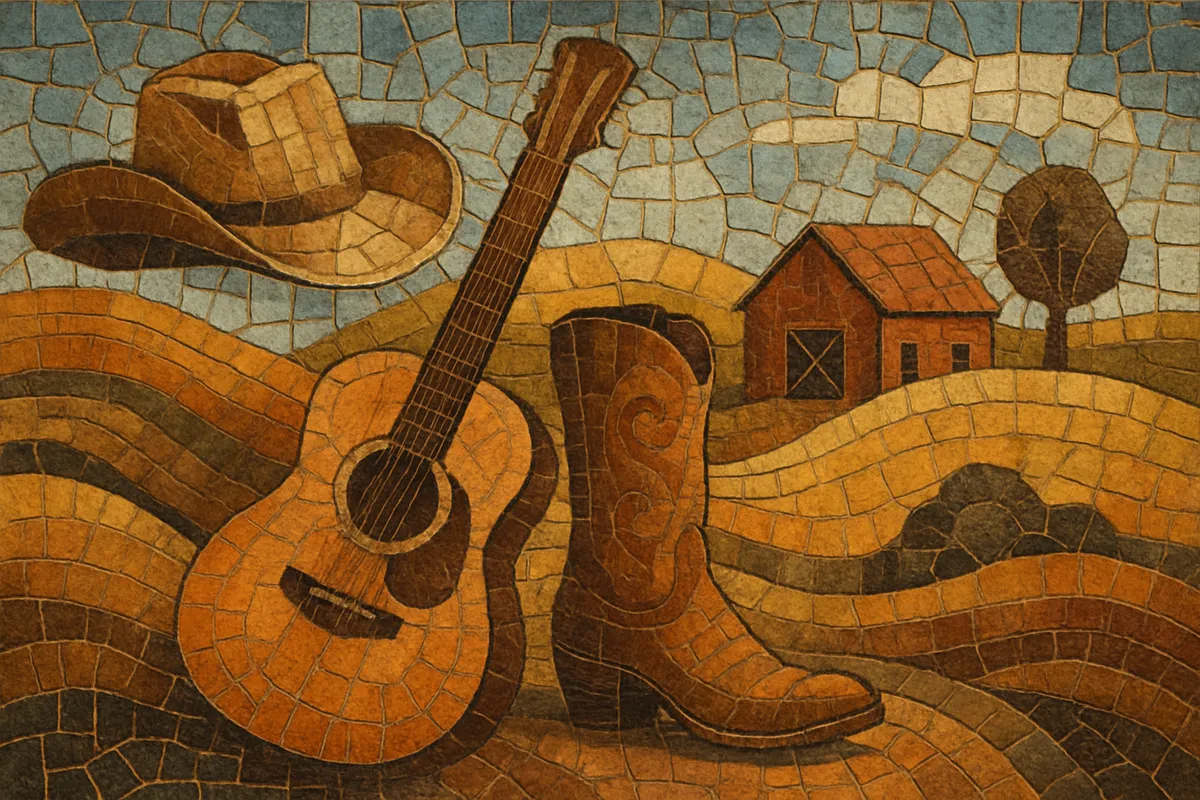
Contemporary country is the mainstream, radio-oriented branch of country music that emerged in the 1980s and consolidated in the 1990s. It blends traditional country instrumentation and storytelling with pop-rock songcraft, polished production, and arena-sized hooks.
While rooted in classic country, the style borrows harmonic language, drum sounds, and arrangement strategies from pop and soft rock, and—since the 2000s—occasionally from hip hop. The result is a crossover-ready sound that foregrounds memorable choruses, relatable lyrics about love, place, and everyday life, and vocals that balance country twang with modern pop clarity.
Contemporary country coalesced in the 1980s as Nashville sought a broader audience after the outlaw boom and the late-70s pop-country wave. A new generation of artists and producers embraced streamlined arrangements, bigger drum sounds, and pop-rock choruses while retaining country’s core instruments—acoustic guitar, steel guitar, and fiddle. Radio formats began codifying the sound, setting the stage for national crossover.
The 1990s marked the commercial zenith. Artists like Garth Brooks, Shania Twain, Alan Jackson, and Reba McEntire defined an arena-sized, hook-driven approach that balanced neotraditional textures with pop polish. Country albums topped all-genre charts, tours moved into stadiums, and music videos on country TV networks amplified star power. Songwriting hubs (Music Row, Nashville) professionalized co-writing rooms that standardized modern country forms and themes.
In the 2000s, producers incorporated denser multitrack guitars, compressed drums, and pop mix aesthetics. Ballads leaned toward adult-contemporary sheen, while up-tempo tracks drew on heartland and soft rock. The 2010s saw selective borrowing from hip hop—808s, clap/snare patterns, and talk-sung cadences—without abandoning country’s narrative voice. Artists like Carrie Underwood, Keith Urban, Kenny Chesney, and later Taylor Swift bridged pop and country audiences.
Streaming and playlist culture widened the sonic palette. Contemporary country now ranges from glossy pop-country ballads to rock-leaning anthems with subtle trap-style percussion. Lyrically, it keeps focusing on relationships, small-town identity, nostalgia, and personal resilience. Despite periodic debates about "what is country," the genre’s mainstream center remains defined by accessible melodies, story-forward lyrics, and production engineered for radio and streaming impact.

